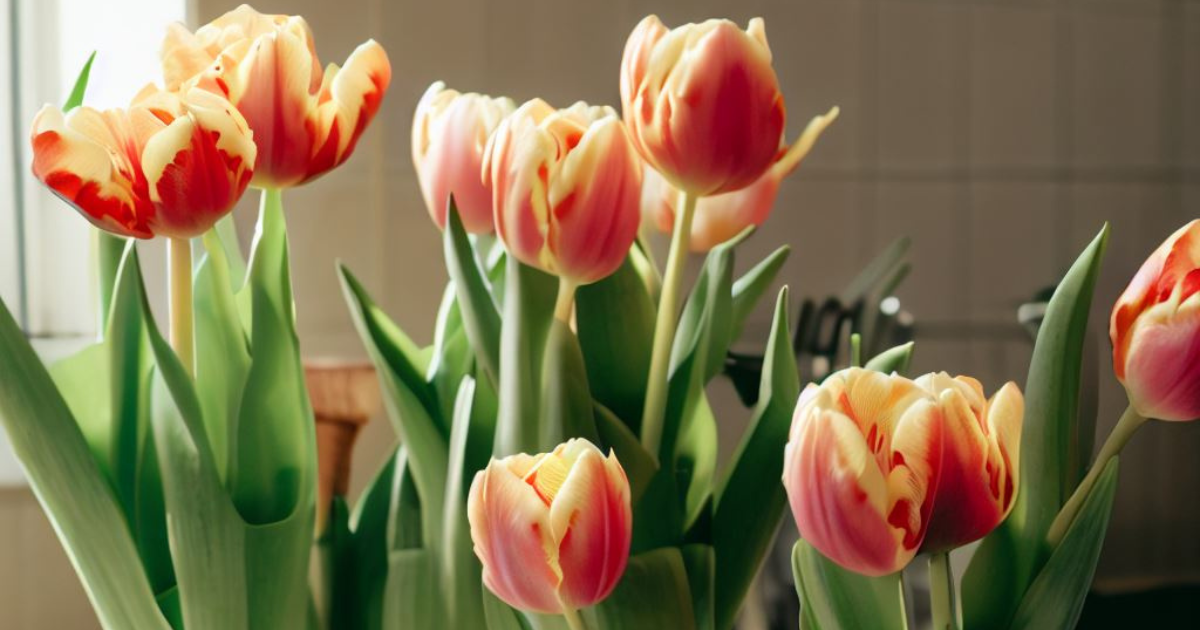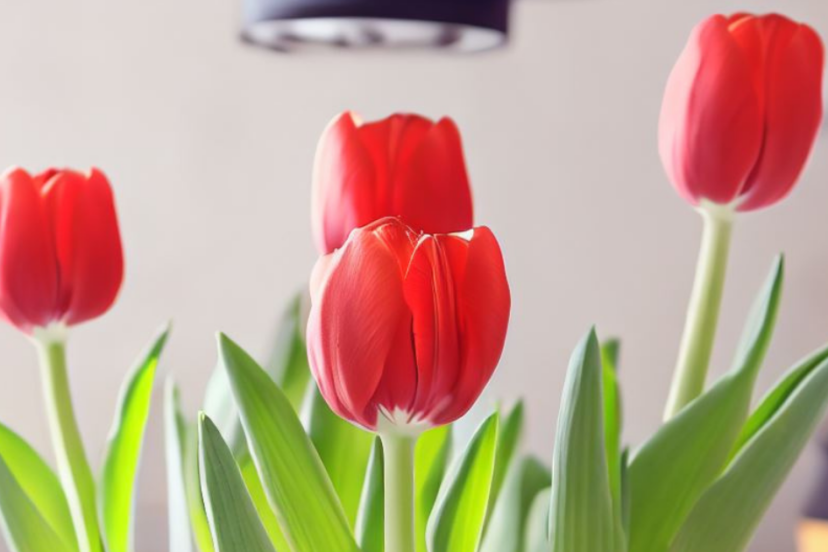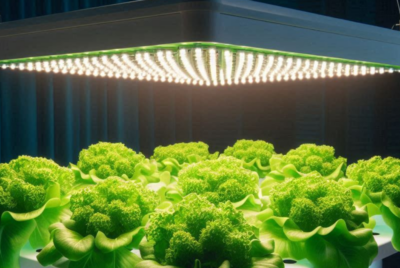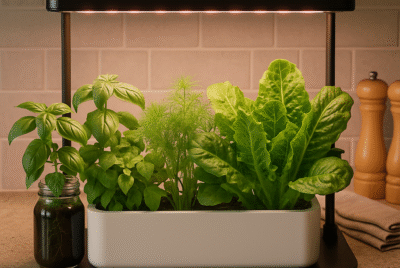When selecting tulip varieties for hydroponic cultivation, consider factors such as bloom time, height, and color. Choose varieties that suit your aesthetic preferences and the desired purpose of the blooms, whether for cut flowers, potted displays, or garden beds. Additionally, ensure the chosen varieties are well-suited for hydroponic growing conditions.
- Setting up a Hydroponic System for Tulips
- Choosing the Right Hydroponic System
Select a hydroponic system that suits your space, resources, and desired scale of tulip cultivation. Options include
nutrient film technique (NFT), deep water culture (DWC), or Dutch bucket systems. Each system has its own benefits and considerations, so choose based on your specific needs and available resources.
In this article, we’ll explore the benefits, techniques, and varieties that will help you cultivate breathtaking tulips in a hydroponic system.
Benefits of Growing Tulips Hydroponically
Hydroponic tulips offer several advantages over traditional soil-based cultivation. By growing tulips hydroponically, you can enjoy benefits such as:
- Precise control over nutrient delivery for optimal growth and vibrant blooms
- Consistent growing conditions throughout the year, regardless of weather or season
- Space efficiency, enabling you to cultivate tulips in limited spaces
- Reduced risk of soil-borne diseases and pests, leading to healthier plants
- Extended vase life of cut tulips, allowing you to enjoy their beauty for longer
- Selecting Tulip Varieties for Hydroponic Cultivation
- Popular Tulip Varieties for Hydroponics
Various tulip varieties excel in hydroponic systems, showcasing captivating colors, shapes, and heights. Popular choices include:
- Single Early: Vibrant, single-bloom tulips that bloom early in the season.
- Triumph: Classic tulips with medium-sized blooms and sturdy stems.
- Parrot: Strikingly beautiful tulips with ruffled petals and unique color patterns.
- Double Late: Fully double tulips with large, peony-like blooms.
- Considerations for Variety Selection
Providing Optimal Growing Conditions
Tulips thrive in cool conditions. Maintain a temperature range of 50-60°F (10-15°C) during the growing period. Adequate ventilation and air circulation are crucial to prevent heat stress and promote healthy growth. Position your hydroponic setup in a location with indirect sunlight or provide artificial lighting to ensure proper photosynthesis.
Preparing Tulip Bulbs for Hydroponic Cultivation
Before planting tulip bulbs in the hydroponic system, ensure they are healthy and free from disease. Pre-chill the bulbs for 8-12 weeks at temperatures around 40°F (4°C) to simulate the winter dormancy period. Properly hydrate the bulbs before planting, and consider using a substrate or grow cubes to provide support.
- Nutrient Management for Hydroponic Tulips
- Understanding Tulips’ Nutrient Requirements
Tulips have specific nutrient requirements during different stages of growth. They need a well-balanced nutrient solution with appropriate ratios of macronutrients (N-P-K) and essential micronutrients. Consider using
hydroponic fertilizer. Understanding these requirements will ensure healthy growth and vibrant blooms.
Monitoring and Adjusting Nutrient Levels
Regularly monitor the nutrient levels in your hydroponic system using electrical conductivity (EC) and pH meters. Adjust the nutrient solution accordingly to maintain the optimal nutrient balance. Pay attention to the specific nutrient requirements of tulips at various growth stages, and make necessary adjustments to promote healthy development.
Common Nutrient Deficiencies in Tulips
Keep an eye out for common nutrient deficiencies in tulips, such as nitrogen deficiency (pale foliage and stunted growth), phosphorus deficiency (poor flowering and weak stems), and iron deficiency (yellowing leaves with green veins). Address deficiencies promptly by adjusting the nutrient solution or providing appropriate supplements to ensure robust growth.
- Temperature and Lighting Requirements for Hydroponic Tulips
- Ideal Temperature Range for Tulips
Maintain a cool temperature range of 50-60°F (10-15°C) during tulip growth and blooming stages. Cooler temperatures help extend the bloom time and promote longer-lasting flowers. Avoid exposing tulips to high temperatures, as it may cause premature wilting or damage to the flowers.
Providing Adequate Lighting for Growth
Tulips require sufficient light to fuel their growth and blooming process. If growing indoors, provide at least 12-14 hours of bright light each day. Position high-quality LED grow lights at an appropriate distance above the plants to ensure adequate light intensity. Adjust the lighting schedule to mimic natural daylight patterns for optimal growth.
Top Varieties

1. Darwin Hybrid Tulips:
– Origin: Bred in the Netherlands in the mid-20th century.
– Tips to Grow: Plant in well-draining substrate, provide full sun, and maintain a consistent temperature around 60-68°F (15-20°C).
– Maturity: Typically mature in 12-14 weeks.
2. Fosteriana Tulips:
– Origin: Native to the mountains of Central Asia.
– Tips to Grow: Plant in loose, sandy soil, and ensure good drainage. They prefer full sun to partial shade.
– Maturity: Usually mature in 10-12 weeks.
3. Triumph Tulips:
– Origin: Bred in the Netherlands in the 20th century.
– Tips to Grow: Plant in well-drained soil, provide ample sunlight, and maintain a temperature of 55-65°F (13-18°C).
– Maturity: Typically mature in 10-12 weeks.
4. Kaufmanniana Tulips:
– Origin: Native to the region from Kazakhstan to western China.
– Tips to Grow: Plant in well-drained soil, and they prefer full sun to partial shade.
– Maturity: Usually mature in 10-12 weeks.
5. Greigii Tulips:
– Origin: Native to the high mountains of Central Asia.
– Tips to Grow: Plant in well-draining soil and provide sunlight. They tolerate cooler temperatures well.
– Maturity: Typically mature in 10-12 weeks.
6. Lily-Flowered Tulips:
– Origin: Derived from wild tulips in Southern Europe and Asia.
– Tips to Grow: Plant in well-draining soil, and they prefer full sun. They have a unique lily-like shape.
– Maturity: Usually mature in 10-12 weeks.
7. Species Tulips:
– Origin: Various species originating from different regions in Europe and Asia.
– Tips to Grow: Plant according to the specific species’ requirements, but generally, they prefer well-drained soil and sunlight.
– Maturity: Maturity times can vary among different species.
8. Parrot Tulips:
– Origin: Developed from various tulip species.
– Tips to Grow: Plant in well-draining soil and provide full sun. Known for their unique, fringed petals.
– Maturity: Typically mature in 12-14 weeks.
9. Double Early Tulips:
– Origin: Bred from wild tulip species.
– Tips to Grow: Plant in well-drained soil, provide sunlight, and protect from strong winds.
– Maturity: Usually mature in 12-14 weeks.
10. Fringed Tulips:
– Origin: Derived from various tulip species.
– Tips to Grow: Plant in well-draining soil, provide full sun, and ensure good air circulation. Known for their fringed petal edges.
– Maturity: Typically mature in 12-14 weeks.
Remember that specific growing conditions can vary, so it’s essential to monitor each variety’s needs closely for successful hydroponic cultivation.
Hydroponic offers faster growth (a scientific study):
Hydroponics offers advantages like faster growth and cleaner harvesting, but it can result in slightly shorter stems. Maintaining the nutrient solution is crucial, and aeration could further improve the method. Miller envisions a future where hydroponic tulip production continues to thrive, offering fresh and high-quality cut flowers to consumers in North America and beyond.
Adjusting Lighting Schedules for Optimal Bloom
To encourage tulip blooms, gradually reduce the daily lighting duration to 8-10 hours as the flowers begin to develop. This adjustment simulates the decreasing daylight hours of spring and triggers the natural blooming response in tulips. This technique helps synchronize the flowering period and ensures a stunning display of blooms.
- Watering and Irrigation Techniques for Hydroponic Tulips
- Proper Watering Practices for Tulips
Maintain proper watering practices to support healthy growth and prevent water-related issues. Provide enough water to keep the growing medium moist but not waterlogged. Avoid overwatering, as it can lead to root rot and other diseases. Regularly check the moisture levels and adjust watering accordingly.
Implementing Irrigation Systems
Consider implementing an efficient irrigation system, such as drip irrigation or ebb and flow, to ensure controlled water delivery. These systems prevent water wastage, provide targeted hydration to the plants, and promote optimal root health. Use timers to maintain consistent watering schedules.
Managing Water Quality and pH Levels
Ensure the water used in your hydroponic system is of good quality and free from contaminants. Filter or treat the water to remove impurities and maintain an appropriate pH level for tulips, ideally between 6.0 and 6.5. Monitoring the pH regularly and making necessary adjustments will help maintain nutrient availability and uptake.
- Pruning and Caring for Hydroponic Tulips
- Pruning Tulip Plants for Optimal Growth
Regularly remove spent flowers and any yellowing or withering leaves to redirect the plant’s energy towards new growth and future blooms. Use clean and sharp pruners to make clean cuts just above the stem base. Pruning also helps improve air circulation, reducing the risk of fungal diseases.
Supporting Tulip Stems and Preventing Flopping
Tall tulip varieties may require support to prevent their stems from flopping under the weight of the blooms. Use stakes or decorative supports to gently secure the stems in an upright position. Supporting the stems ensures that the flowers remain prominently displayed and prevents damage.
Dealing with Tulip Diseases and Pests
Maintaining a clean and hygienic growing environment is crucial for preventing diseases in hydroponic tulips. Monitor the plants regularly for signs of pests like aphids or fungal diseases such as gray mold or tulip fire. If any issues arise, promptly address them using appropriate organic or chemical controls to protect the health of your plants.
- Harvesting and Enjoying Hydroponic Tulips
- Knowing When Tulips Are Ready for Harvest
Harvest tulips when the flowers are fully open and display vibrant colors. Gently cut the stems at an angle, just above the bulb, using clean and sharp shears. Harvesting at the right stage ensures that you can enjoy the maximum beauty and longevity of the blooms.
Displaying Tulips in Arrangements
Arrange your harvested tulips in vases or containers filled with clean water. Remove any leaves that may be submerged to prevent bacterial growth. Experiment with different color combinations and flower heights to create visually appealing displays that enhance the beauty of the blooms.
Extending the Lifespan of Cut Tulips
To extend the vase life of your cut tulips, place them in a cool location away from direct sunlight and drafts. Change the water every two days, recut the stems at an angle, and add floral preservatives to the water. Enjoy the vibrant tulips for as long as possible by following these care tips.
Conclusion
Growing hydroponic tulips is a rewarding experience that allows you to cultivate breathtaking blooms with precision and care. By selecting suitable varieties, providing optimal growing conditions, managing nutrients and water effectively, and practicing proper pruning and care techniques, you can enjoy the beauty and elegance of tulips throughout the year. Dive into the world of hydroponic tulips and witness the magic of these captivating flowers.
FAQs (Frequently Asked Questions)
1. How long does it take for hydroponic tulips to bloom?
The time from planting to bloom for hydroponic tulips typically ranges from 2 to 4 weeks, depending on the variety and growing conditions.
2. Can I reuse the tulip bulbs in subsequent seasons?
Tulip bulbs can be reused, but it’s important to note that the quality and performance may diminish over time. It’s recommended to refresh the bulbs every few years for optimal results.
3. Can I grow hydroponic tulips outdoors?
Hydroponic tulips are commonly grown indoors, but they can be cultivated outdoors in suitable climates. Ensure the temperature, lighting, and other environmental conditions align with tulip requirements.
4. How often should I change the nutrient solution for hydroponic tulips?
It’s advisable to change the nutrient solution every 1-2 weeks or as needed based on the nutrient levels and pH. Regular monitoring ensures the plants receive adequate nutrition for optimal growth.
5. Can I combine different tulip varieties in a hydroponic system?
Yes, you can combine different tulip varieties in a hydroponic system. This allows for a diverse display of colors, shapes, and bloom times, creating a visually stunning arrangement of tulips.
*We may earn a commission from purchases made through our links, at no cost to you. This does not affect our product recommendations. Please see our disclosure to learn more.





